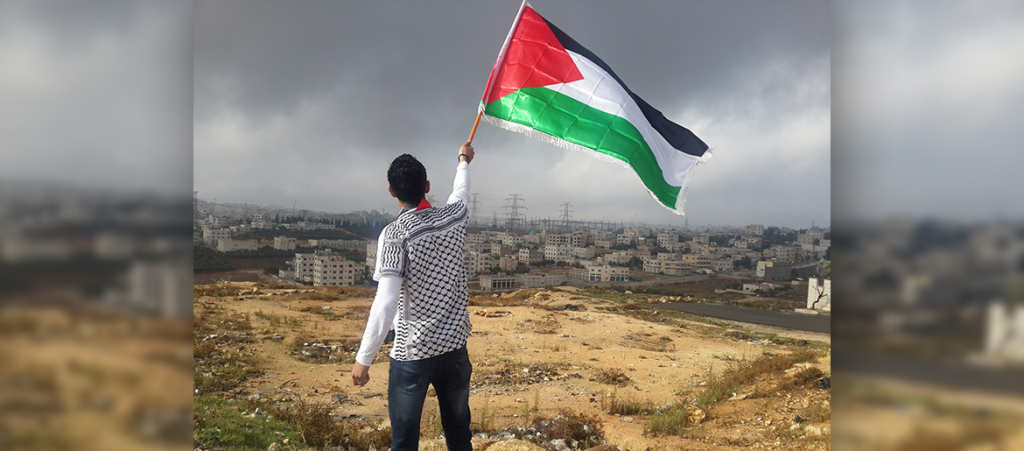
As the crisis in the Middle East continues to get worse – despite calls for a ceasefire from the UN – Zee Feed readers had questions. First, on the history of the crisis in Palestine and then on the numbers that might help us understand the real impact: how many deaths the crisis has caused, how many Palestinians have been displaced, and how foreign governments are aligned.
We’ll answer those questions here to help paint a bigger picture about what the Israel-Palestine crisis looks like now, compared to where the early 20th Century.
A note before you begin: When reading about the crisis it’s easy to fall into assumptions about the terms used for the groups involved. Remember that a) ‘Israel’ is not a representative or stand-in for the global Jewish population, b) not all Palestinians are Muslim, and c) while stopping the immediate violence and displacement is the short-term focus, it won’t solve the bigger issue of territorial claim. Solving that centuries-old problem is way beyond the scope of almost anyone reading this article.
How many deaths has the crisis caused?
It’s difficult to find reliable numbers on how many people have been killed in the historical part of this conflict. Data from the 1948-1967 period varies a lot and is disputed – unfortunately, Zee Feed cannot provide pre-2000 death toll figures with any confidence.
There are better records kept for the modern era of the crisis. According to B’Tselem, a human rights non-profit organisation based in Jerusalem, since 2000 the death toll stands at (approximate):
- 9937 Palestinians
- 1268 Israelis
You can find more information, including injuries and deaths of children, here.
Israeli rights group B’Tselem told MEE that Friday “saw the highest number of Palestinian fatalities by Israel in the occupied West Bank in a single day since 2002” https://t.co/cKStp3ab1i
— Middle East Eye (@MiddleEastEye) May 18, 2021
How many Palestinians have been displaced?
There are an estimated 5.5 million Palestinian recognised refugees (5.4m recognised by the UNRWA, and a further 100,000 by the UNHCR). They are classified as people who fled during the 1948 and 1967 wars, or their direct descendents. The 1948 Arab-Israeli war, known as Nakba (‘the catastrophe’), when Israeli forces brutally pushed over 700,000 Palestinians out of the country, is considered the beginning of the forced displacement… that continues even today with the eviction of residents from Sheikh Jarrah.
Palestinians remain blocked from returning to the land of their former homes within now-Israel – only those with strict permits or visas are allowed through the Israeli government’s checkpoints. On top of this, Palestinian refugees living in Israel, Lebanon, Egypt and Iraq (approximately 800,000 people) do not have the same rights as other citizens or residents, continuing the cycle of displacement and oppression.
How many Jewish people have migrated to Israel?
Since 1948, approximately 3.3m Jewish people have migrated to what is now Israel. In 2020, 75% of the population of Israel was Jewish, compared to 11% of the population in 1922 British-mandated Palestine. They came to Israel fleeing persecution, unrest and poor conditions in other countries, especially across Europe (in the aftermath of WWII) and from Russia.
But the fact that Jewish people were escaping awful circumstances themselves does not excuse the Israeli government’s actions in:
- a) the continued displacement and suppression of Palestinians who still live there, breaking international human rights law, and,
- b) the continued attacks on an underpowered Gaza, breaching the UN’s war crime conventions.
How has control of the Palestinian regions changed during the crisis?
Again, that both groups have ancestral claims to this region is at the heart of the historical context and goes some way to explaining how we got here – but does not excuse the current violence and warfare.
Rather than only defending to hold its territory, the Israeli government has been embarking on expansion – taking borders beyond what the UN proposed in 1947. These infographic maps, from Good Is in collaboration with Column Five in 2011, gives a broad overview of how that has played out (click to view the original):
How can we help Gazans under heavy Israeli attack right now?
Right now, people in Gaza under heavy attack from Israel are most in need of help – while the Hamas are firing rockets of their own, those living in Israel are more protected than Gazans at this point in time. As so many have noted, this is not a battle of equal powers – and the resulting devastation falls on civilians.
First and foremost, a ceasefire between the Hamas in Gaza and the Israeli military must be achieved. Foreign Affairs Minister Marise Payne supports this, and has said Australia would play ‘an active role’ in any peace discussions facilitated by the UN.
If you would like to donate, consider these organisations:
Anera, a relief organisation dedicated to helping refugees affected by crises in Palestine, Jordan and Lebanon. support.anera.org/a/donate-palestine
United Nations Relief and Works Agency for Palestine Refugees in the Near East (UNRWA), the primary agency providing aid and support for Palestinian refugees throughout the Middle East. unrwa.org/
Care Australia, an Australian non-profit supporting people living in poverty around the world, including Gaza. care.org.au/country/palestinian-territories/






